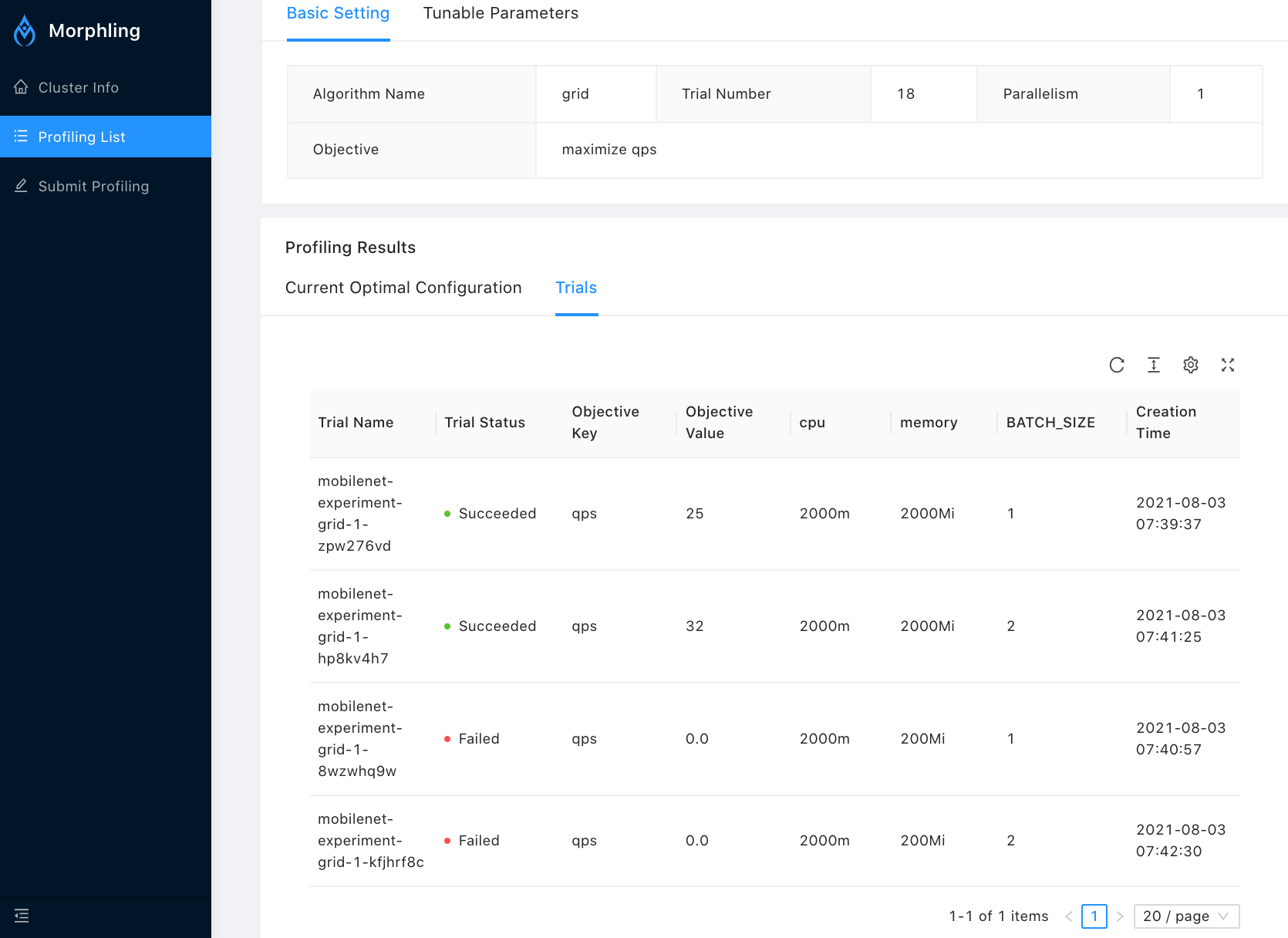Morphling UI
Deploy Morphling UI
Morphling UI is built upon Ant Design. If you are installing Morphling with Yaml files, from the root directory, run
kubectl apply -k manifests/ui
Or, if you are installing Morphling with Helm chart, Morphling UI is automatically deployed.

Check if all Morphling UI is running successfully:
kubectl -n morphling-system get svc morphling-ui
Expected output:
NAME TYPE CLUSTER-IP EXTERNAL-IP PORT(S) AGE
morphling-ui NodePort 10.96.63.162 <none> 9091:30680/TCP 44m
If you are using minikube, you can get access to the UI with port-forward:
kubectl -n morphling-system port-forward --address 0.0.0.0 svc/morphling-ui 30263:9091
Then you can get access to the ui at http://localhost:30263/.
For detailed UI deployment and developing guide, please check UI.md
Developer Guide
Prerequisites
- NodeJS > 10
- Go > 1.14
Folder structure
For React frontend, you can find it under console/frontend.
For Go backend you, can find it under console/backend.
Development
Build Console Backend Server
go build -mod=vendor -o backend-server morphling/console/backend
Run local Console Backend Server
- Prepare a
kubeconfigfile which defines k8s development environment. - Set
KUBECONFIGenvironment variable.
export KUBECONFIG={/path-to-kubeconfig-file}
Serve UI frontend
cd console/frontend/
- Install dependencies (optional)
npm install
Run
npm run buildunder/frontendfolder. It will create/frontend/distdirectory with optimized production build.Go to
console/backend/.Run backend server with disabled authentication mode
./backend-server
After that, you can access the UI using this URL: http://localhost:9091.
Optional: Start Console Frontend with Connection to other dev Backend-Server directly
If you are not able to run local console backend server, or other dev console backend server is already present, you could make frontend dev server to proxy API requests to other dev backend server directly.
- Change Proxy Backend Path: console/frontend/config/config.js
proxy: [
{
target: "http://localhost:9091",
...
}
]
change the target to address <ip:port> of other present console backend server.
- Run Console Frontend Dev Server
npm run start
Code style
Our UI is built upon Ant Design.